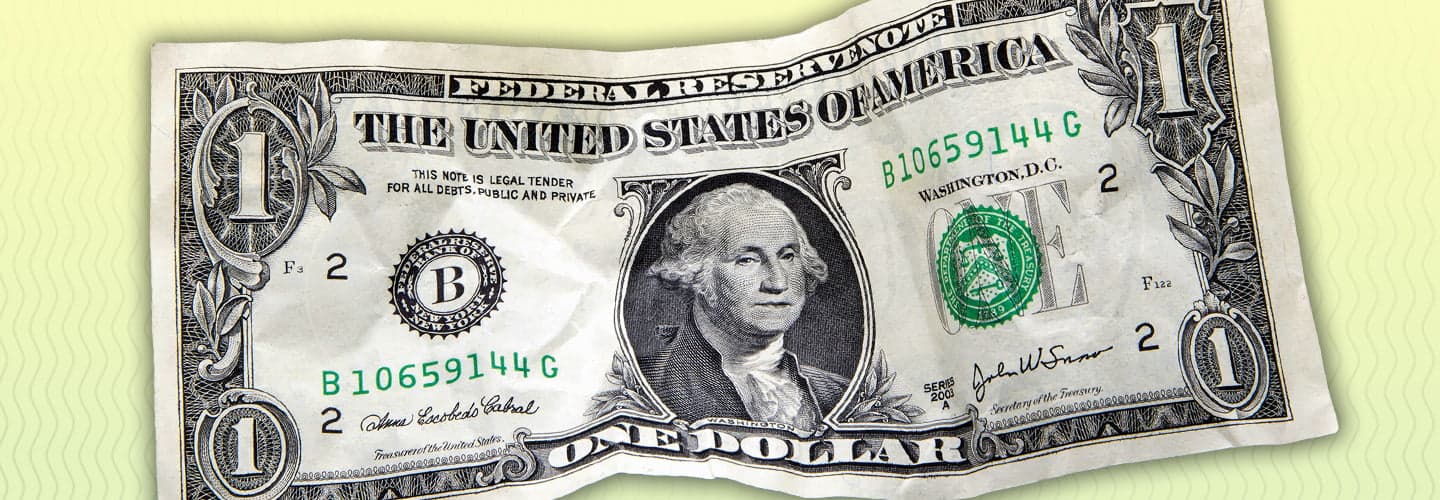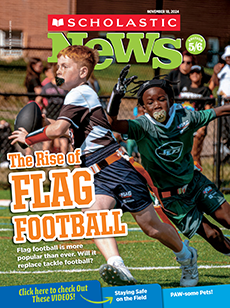Bucks. Dough. Bread. Whatever you call it, American money has changed a lot over the years. Before the 1860s, gold and silver coins were the only currency produced by the U.S. government. But that changed during the Civil War (1861-1865). President Abraham Lincoln needed money to pay Union troops, but there was a shortage of coins. Enter the dollar bill. Here are some fascinating facts about our paper money.

Shutterstock.com
Show Me the Money!
Secret Symbols
Courtesy of National Numismatic Collection, National Museum of American History
George Washington didn’t appear on the first dollar bill in 1862. Instead, it showed Salmon P. Chase. He was the secretary of the U.S. Treasury—the department that handles the federal government’s money. Take a closer look at today’s $1 bill.
Shutterstock.com
1. All U.S. bills are officially called Federal Reserve notes.
2. A unique serial number appears twice on each bill.
3. Some people think an owl is hidden here. What does it look like to you?
Shutterstock.com
This bill is strong! You could fold it back and forth about 4,000 times before it would rip.
The back of the bill shows the Great Seal of the United States. The 13 original states are represented in several places.
1. This unusual symbol is the Eye of Providence, or the All-Seeing Eye.
2. 13 levels on the pyramid
3. MDCCLXXVI is 1776 in Roman numerals. That’s the year the U.S. declared its independence.
4. 13 stars above the bald eagle
5. 13 stripes on the shield
6. 13 arrows, a symbol of war
7. 13 leaves on the olive branch, a symbol of peace
Shutterstock.com
Bills are printed on paper that’s a blend of cotton and linen.
Making Money
The Bureau of Engraving and Printing (BEP) produces all the paper money in the U.S. The BEP has printing centers in Fort Worth, Texas, and Washington, D.C. They produce hundreds of millions of bills each month, in denominations ranging from $1 to $100.
Rob Crandall/Alamy Stock Photo
Paper currency is printed on huge sheets before being cut into individual bills.
Real or Fake?
Some people print fake bills and try to pass them off as real. That’s called counterfeiting, and it’s illegal. U.S. bills have security features to make them harder to counterfeit, including special ink colors. Here are some ways to tell if your dough is real.
Run your fingers across any bill. It should feel slightly rough, unlike regular paper.
Shutterstock.com
Bills $5 and higher have microprinting—tiny words that you need a magnifying glass to see!
Shutterstock.com
Bills $10 and higher are printed with color-changing ink. When you tilt the bill, the number in the lower right corner changes from copper to green.
Shutterstock.com
Hold any bill $5 or higher up to a light. You should see a hidden design called a watermark. On a $5 bill, it’s the number 5. On higher bills, it’s a smaller portrait of the person shown on the bill.
1. What are two details in the article that support the idea that “money has changed a lot over the years”?
2. What is one fact you were surprised to learn about the $1 bill in the “Secret Symbols” diagram? Why do you find the fact surprising?
3. What is a watermark, according to the article? What is the purpose of a watermark on a bill?
